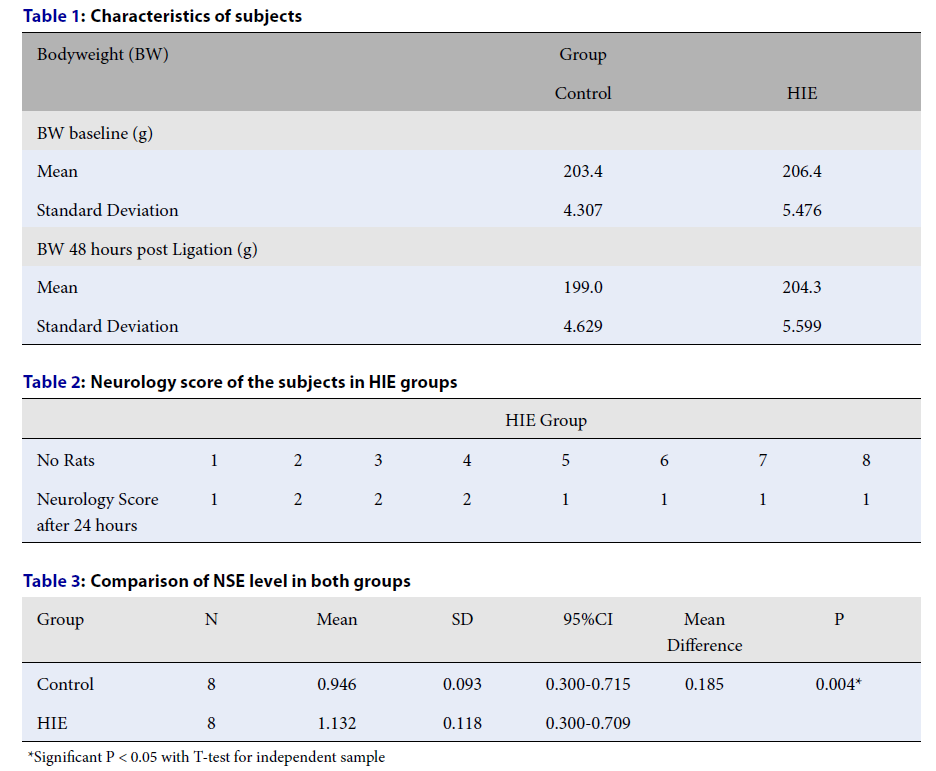Increased Neuron Specific Enolase in a Hypoxic Ischemia Rat Model
DOI:
https://doi.org/10.15419/bmrat.v9i7.752Keywords:
hypoxic ischemic encephalopathy, mortality, neuron specific enolaseAbstract
Introduction: Acute brain injury caused by cerebral ischemia, either due to stroke or ischemic hypoxic-ischemic encephalopathy (HIE), represents a major neurological cause of death and disability worldwide. Neuronal cell injury has been shown to correlate with a significant increase in neuron-specific enolase (NSE) levels in in vitro studies. This study aims to measure NSE levels in the blood serum of rats with HIE.
Methods: This study used an experimental post-test design in which occlusion of the right common carotid artery (CCA) was performed on Wistar rats, which were then placed in a hypoxic chamber and reperfused after 60 minutes (treatment group). Neurological scores were collected over the first 24 hours. After 48 hours, experimental animals were sacrificed and their serum NSE levels were measured using ELISA. Statistical analysis using a T-test was performed for independent samples.
Results: A total of 16 male rats were included in the study. Neurological scores indicated that all HIE group rats experienced hemiparesis to varying degrees. NSE levels in the treatment group were significantly higher than in the control group (p < 0.05). The mean NSE level in the treatment group was higher than that in the other group.
Conclusion: Consistent with in vitro studies, we found that NSE was higher in the HIE rat model than in controls. These data support future studies to assess the fitness of serum NSE as a biomarker of brain damage.

Published
Issue
Section
License
Copyright The Author(s) 2017. This article is published with open access by BioMedPress. This article is distributed under the terms of the Creative Commons Attribution License (CC-BY 4.0) which permits any use, distribution, and reproduction in any medium, provided the original author(s) and the source are credited.
